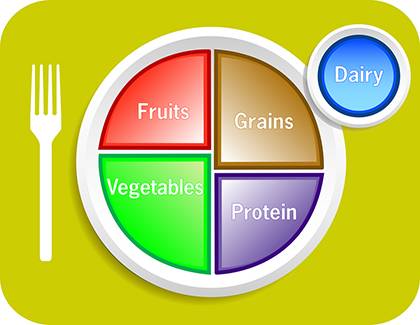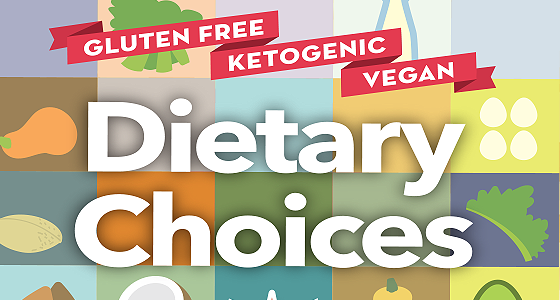Table of Contents
The topic of dietary fats is one that often sparks confusion and debate among health-conscious individuals. While fats are an essential macronutrient crucial for overall health, not all fats are created equal. In this article, we will dissect the world of fats, distinguishing between healthy fats and unhealthy fats. Armed with knowledge, you can make informed choices that promote well-being and reduce the risk of chronic diseases.
The subject of dietary fats is undeniably a source of considerable confusion and debate within the realm of nutrition and health. As consumers, we are often bombarded with conflicting information about which fats are beneficial, which are harmful and how they impact our well-being. In an age where dietary choices play a vital role in our overall health, it’s essential to unravel the intricacies of fats to make informed decisions that contribute to our long-term vitality and reduce the risk of chronic diseases.
Understanding the Diversity of Fats: Fats, as one of the three essential macronutrients alongside carbohydrates and proteins, play a fundamental role in our bodies. They are not just a concentrated source of energy; they also serve as critical building blocks for cell membranes, support the absorption of fat-soluble vitamins (A, D, E and K) and are involved in numerous biochemical processes. However, the diversity of fats is where the complexity arises.
Healthy Fats vs. Unhealthy Fats: Not all fats are created equal and this is where the distinction between healthy fats and unhealthy fats comes into play. Healthy fats, often referred to as unsaturated fats, include monounsaturated fats and polyunsaturated fats. These can be found in foods like avocados, nuts, seeds and fatty fish. They are celebrated for their potential to lower bad cholesterol levels, reduce inflammation and support heart health.
On the other side of the spectrum are unhealthy fats, specifically saturated fats and trans fats. Saturated fats are commonly found in animal products like meat and dairy, as well as certain tropical oils like coconut and palm oil. Excessive consumption of saturated fats can raise LDL (low-density lipoprotein) cholesterol levels and increase the risk of heart disease. Trans fats, often created through the process of hydrogenation in food manufacturing, are unequivocally detrimental to health. They are known to increase the risk of heart disease and should be avoided whenever possible.
Balancing Act for Optimal Health: Achieving a healthy balance of fats in your diet is crucial. This involves reducing the intake of saturated and trans fats while incorporating more sources of healthy fats into your meals. It’s also essential to pay attention to portion sizes and overall caloric intake, as even healthy fats can contribute to weight gain when consumed excessively.
The Role of Informed Choices: Arming yourself with knowledge about dietary fats empowers you to make conscious choices about what you eat. By reading food labels, understanding the sources of fats in your diet and recognizing the benefits of healthy fats, you can tailor your eating habits to promote overall well-being. Furthermore, making informed decisions about fats can help reduce the risk of chronic diseases such as heart disease, diabetes and obesity, which are often linked to dietary factors.
In conclusion, the world of dietary fats is multifaceted, but it’s a puzzle worth solving for the sake of your health. By distinguishing between healthy fats and unhealthy fats and making informed choices about your dietary fat intake, you can take a proactive approach to your well-being. Remember, knowledge is the key to optimizing your diet, supporting your health and reducing the risk of chronic diseases in the long run.
You can also read more about this here: A healthy approach to dietary fats: understanding the science and …
The Role of Dietary Fats
Before diving into the distinction between healthy and unhealthy fats, it’s essential to understand the role fats play in the body. Fats are a source of energy, aid in the absorption of fat-soluble vitamins (A, D, E and K), support cell growth and provide essential fatty acids that the body cannot produce on its own. However, not all fats serve these purposes equally.
Before delving into the nuanced distinction between healthy and unhealthy fats, it’s imperative to grasp the fundamental role that fats play in the intricate orchestra of our bodily functions. Fats are not just passive components; they are dynamic players in maintaining overall health and vitality.
Energy Reservoir: One of the primary roles of fats is to serve as a dependable reservoir of energy. When we consume more calories than our body requires for immediate energy expenditure, the excess is converted into fat and stored for later use. This stored fat is a crucial backup fuel source that can sustain us during periods of fasting, prolonged physical exertion or when our dietary intake is insufficient.
Vitamin Absorption: Fats also serve as facilitators for the absorption of fat-soluble vitamins—namely, vitamins A, D, E and K. These essential nutrients are critical for a wide array of bodily functions, including maintaining healthy skin and vision (vitamin A), regulating calcium absorption and bone health (vitamin D), acting as antioxidants (vitamin E) and promoting blood clotting and bone metabolism (vitamin K). Without sufficient dietary fats, our ability to absorb and utilize these vitamins can be compromised.
Cellular Building Blocks: Fats are integral to the structure and function of every cell in our body. The phospholipid bilayer, the basic structural unit of cell membranes, is composed of fats (lipids). These lipids regulate the passage of nutrients and waste products in and out of cells, maintain cell integrity and play a vital role in cell signaling and communication.
Essential Fatty Acids: Some fats, known as essential fatty acids, are nutrients that our bodies cannot synthesize independently. We must obtain these fatty acids—such as omega-3 and omega-6—from our diet. They are essential for the production of hormones, maintaining healthy skin, supporting brain function and modulating inflammation. Balanced consumption of these essential fatty acids is crucial for overall well-being.
However, it’s important to emphasize that not all fats fulfill these roles equally or beneficially. The distinction between healthy and unhealthy fats hinges on their impact on health and the balance of different types of fats in the diet. Healthy fats, like those found in avocados, nuts and fatty fish, can enhance well-being and reduce the risk of chronic diseases when consumed in moderation. On the other hand, unhealthy fats, such as trans fats and excessive saturated fats, can have detrimental effects on health and should be limited.
In summary, fats are multifaceted components of our diet and physiology. They serve as energy stores, vitamin carriers, cellular building blocks and sources of essential fatty acids. However, understanding the differences between healthy and unhealthy fats is paramount for making informed dietary choices that support our long-term health and vitality. Balancing these fats effectively is an essential aspect of a nutritious diet and a key factor in maintaining overall well-being.
To delve further into this matter, we encourage you to check out the additional resources provided here: Dietary Fats | American Heart Association

Monounsaturated Fats
These healthy fats are found in foods like avocados, olive oil and nuts. They have been associated with improved heart health by reducing bad cholesterol levels (LDL) and lowering the risk of heart disease.
Embracing a diet rich in healthy fats offers a bounty of benefits for your heart and overall well-being. These heart-boosting fats, commonly found in foods like avocados, olive oil and nuts, play a pivotal role in nurturing cardiovascular health by positively influencing cholesterol levels and reducing the risk of heart disease.
Champion of Heart Health: Healthy fats, particularly monounsaturated and polyunsaturated fats, are heart’s best friends. They promote cardiovascular health by helping to lower the levels of LDL (low-density lipoprotein), often referred to as “bad cholesterol,” in your bloodstream. High LDL levels are a significant risk factor for heart disease, so by incorporating these fats into your diet, you take a significant step toward fortifying your heart.
Balancing Cholesterol: These fats are renowned for their ability to balance cholesterol ratios. They not only lower LDL levels but also elevate HDL (high-density lipoprotein) cholesterol, which is often called “good cholesterol.” HDL cholesterol helps transport excess LDL cholesterol away from the arteries, reducing the likelihood of plaque buildup and clogged arteries.
Reduced Inflammation: Chronic inflammation is a key driver of heart disease. Healthy fats have anti-inflammatory properties that can help mitigate this risk. They work to quell inflammation throughout the body, including the arteries, reducing the chances of arterial damage and plaque formation.
Enhanced Blood Vessel Function: Healthy fats promote improved blood vessel function, keeping your circulatory system running smoothly. They help relax blood vessels, ensuring that blood flows more freely, which can contribute to maintaining healthy blood pressure levels.
Rich Nutrient Profile: Foods rich in healthy fats are often packed with essential nutrients. For instance, avocados are a great source of potassium, which supports healthy blood pressure. Nuts are loaded with antioxidants, fiber and minerals like magnesium, all of which contribute to heart health.
Satiety and Weight Management: Including healthy fats in your meals can help you feel full and satisfied, which may prevent overeating and snacking on less healthy options. This can be instrumental in achieving and maintaining a healthy weight, which is a significant factor in heart disease prevention.
Versatility in the Kitchen: These fats offer a world of culinary possibilities. Olive oil, for example, is a cornerstone of Mediterranean cuisine and can be used in salad dressings, sautés and drizzled over roasted vegetables. Avocado’s creamy texture makes it a fantastic addition to smoothies, salads and sandwiches. Nuts can be sprinkled over breakfast oats, tossed into stir-fries or enjoyed as a convenient, heart-healthy snack.
Incorporating foods rich in healthy fats into your daily diet not only enhances the flavor and texture of your meals but also helps safeguard your heart against the risks of heart disease. These fats, found in nature’s bounty of delicious foods, are a tasty and nourishing way to promote cardiovascular well-being and embrace a heart-healthy lifestyle.
Additionally, you can find further information on this topic by visiting this page: The truth about fats: the good, the bad, and the in-between – Harvard …

Polyunsaturated Fats
Omega-3 and Omega-6 fatty acids, essential for the body, fall into this category. Sources include fatty fish (salmon, mackerel), flaxseeds and walnuts. Omega-3s, in particular, are renowned for their anti-inflammatory properties and cognitive benefits.
Omega-3 and Omega-6 fatty acids belong to the category of essential fatty acids and they play pivotal roles in maintaining optimal health. The availability of these fatty acids from various sources provides a diverse range of dietary options for individuals looking to incorporate them into their diets:
Balancing Act: Achieving a balance between Omega-3 and Omega-6 fatty acids is essential for overall health. While both are necessary, modern diets often contain an excess of Omega-6 fatty acids, which can promote inflammation when not balanced with Omega-3s. Being aware of this balance and adjusting one’s diet accordingly can have a significant impact on well-being.
Fatty Fish: Fatty fish such as salmon, mackerel, trout and sardines are prized sources of Omega-3 fatty acids, particularly eicosapentaenoic acid (EPA) and docosahexaenoic acid (DHA). These Omega-3s are known for their anti-inflammatory properties, heart health benefits and support for brain function. Regular consumption of these fish can have a positive impact on cardiovascular and cognitive health.
Plant-Based Sources: Flaxseeds and walnuts are excellent plant-based sources of Alpha-linolenic acid (ALA), a type of Omega-3 fatty acid. While ALA is not as potent as EPA and DHA, it is still valuable for its potential anti-inflammatory effects and contributions to heart health. Vegans and vegetarians often rely on these sources to meet their Omega-3 needs.
Chia Seeds: Chia seeds are another notable plant-based source of Omega-3 fatty acids, specifically ALA. They can be easily incorporated into smoothies, yogurt or as a topping for salads and cereals, providing a convenient way to boost Omega-3 intake.
Anti-Inflammatory Benefits: Omega-3 fatty acids, particularly EPA and DHA, are renowned for their anti-inflammatory properties. They can help mitigate chronic inflammation, which is linked to a range of health issues, including heart disease, arthritis and certain autoimmune disorders.
Cognitive Benefits: Omega-3s have gained recognition for their cognitive benefits. They are essential for brain health and have been associated with improved memory, cognitive function and a reduced risk of age-related cognitive decline. Including Omega-3-rich foods in one’s diet is seen as a proactive step in supporting long-term brain health.
Supporting Heart Health: Omega-3 fatty acids have a positive impact on heart health by reducing the risk of heart disease. They help lower triglycerides, reduce blood pressure and may enhance overall cardiovascular function, contributing to a healthier heart.
Dietary Considerations: Individuals with specific dietary preferences or restrictions can choose Omega-3 sources that align with their needs. Whether following a pescatarian, vegetarian, vegan or other dietary pattern, there are options available to ensure adequate Omega-3 intake.
Supplementation: In some cases, individuals may opt for Omega-3 supplements, especially if it is challenging to obtain sufficient fatty acids through dietary sources alone. However, it’s essential to consult a healthcare professional before starting any supplementation regimen.
In summary, Omega-3 and Omega-6 fatty acids are essential for maintaining good health and their sources are diverse, ranging from fatty fish to plant-based options like flaxseeds and walnuts. Being mindful of the balance between these fatty acids and incorporating them into one’s diet can have far-reaching benefits, from reducing inflammation to supporting heart and cognitive health. Ultimately, understanding and harnessing the potential of these essential fatty acids is a key step towards achieving overall well-being.
Don’t stop here; you can continue your exploration by following this link for more details: Healthy Living | Heart Foundation

Saturated Fats
These fats are often solid at room temperature and are commonly found in animal products like red meat, butter and full-fat dairy. High intake of saturated fats is linked to elevated LDL cholesterol levels and an increased risk of heart disease.
Saturated fats, those fats that are typically solid at room temperature, have long been a topic of concern in the realm of nutrition and health. They are prevalent in many animal-based products, including red meat, butter and full-fat dairy. While our bodies do require some saturated fats for essential functions like hormone production and cell structure, the key lies in moderation.
Excessive consumption of saturated fats has been closely linked to negative health outcomes. One of the most notable associations is with elevated levels of LDL (low-density lipoprotein) cholesterol, often referred to as “bad” cholesterol. High LDL cholesterol levels can lead to the accumulation of cholesterol in the arteries, a process known as atherosclerosis. This buildup can narrow the arteries and restrict blood flow, increasing the risk of heart disease and related conditions.
Furthermore, the impact of saturated fats on heart health extends beyond cholesterol levels. These fats have been shown to promote inflammation in the body, a known contributor to various chronic diseases, including cardiovascular diseases. Inflammation can lead to damage to blood vessels and further exacerbate the risk of heart-related issues.
It’s important to note that not all saturated fats are created equal. Some sources of saturated fats, like coconut oil, have garnered attention for their potential health benefits. However, the relationship between different types of saturated fats and health outcomes is still an area of ongoing research.
In light of the well-established connection between high intake of saturated fats and heart disease risk, dietary guidelines often recommend limiting the consumption of foods rich in these fats. Instead, they advocate for a balanced diet that includes a variety of nutrient-dense foods, such as fruits, vegetables, whole grains, lean proteins and unsaturated fats like those found in nuts, seeds and olive oil.
In conclusion, while saturated fats play a role in our diets, it’s crucial to consume them in moderation and make mindful choices when it comes to dietary fat sources. Prioritizing a balanced diet that minimizes saturated fat intake and emphasizes healthier fats can contribute to better heart health and overall well-being.
To expand your knowledge on this subject, make sure to read on at this location: The truth about fats: the good, the bad, and the in-between – Harvard …

Trans Fats
These are artificially created fats often found in processed and fried foods, baked goods and margarine. Trans fats are notorious for their detrimental impact on heart health and should be minimized or avoided altogether.
Trans fats, also known as partially hydrogenated oils, are synthetic fats that have infiltrated our modern diets, primarily through processed and fried foods, baked goods and margarine. These fats have garnered a notorious reputation for their profoundly negative effects on heart health, making it imperative to not only minimize but completely avoid them whenever possible.
The danger of trans fats lies in their ability to raise levels of “bad” LDL cholesterol while simultaneously lowering “good” HDL cholesterol in the bloodstream. This undesirable shift in cholesterol levels significantly increases the risk of heart disease, a leading cause of mortality worldwide. Furthermore, trans fats can also trigger inflammation and contribute to the development of other chronic health conditions, such as diabetes.
Acknowledging the harmful impact of trans fats, many countries have taken regulatory steps to limit or ban their use in the food industry. These actions are a testament to the growing awareness of the need to protect public health and reduce the burden of cardiovascular disease.
For individuals, the key to avoiding trans fats involves diligent label reading. Checking ingredient lists for partially hydrogenated oils is a crucial step in making healthier food choices. Opting for whole, unprocessed foods and cooking at home whenever possible are also effective strategies to steer clear of trans fats.
In the quest for better heart health and overall well-being, understanding the hazards associated with trans fats is essential. By making informed dietary choices and advocating for healthier food options, individuals can contribute to a collective effort to reduce the prevalence of these harmful fats and safeguard cardiovascular health for themselves and future generations.
To delve further into this matter, we encourage you to check out the additional resources provided here: A healthy approach to dietary fats: understanding the science and …

Read Labels
When shopping for packaged foods, check the ingredient list for trans fats and partially hydrogenated oils. Choose products with little to no trans fats.
When shopping for packaged foods, being a discerning consumer can make a significant impact on your health. One essential practice to adopt is checking the ingredient list for trans fats and partially hydrogenated oils. These hidden culprits have long been associated with adverse health effects and making informed choices can go a long way in safeguarding your well-being.
Trans fats, often found in processed and fried foods, have been linked to a host of health issues, including an increased risk of heart disease and elevated cholesterol levels. By scrutinizing the ingredient list, you’re taking a proactive step toward reducing your intake of these harmful fats.
The good news is that many countries have implemented labeling regulations requiring manufacturers to disclose trans fat content on packaging. When you see “partially hydrogenated oils” or “trans fats” listed, it’s a red flag. Opt for products that contain little to no trans fats, as these choices align with a heart-healthy diet.
Instead, look for products that use healthier fats like olive oil, canola oil or avocado oil. These fats, when used in moderation, can be part of a balanced diet and may even offer some health benefits. Additionally, products that boast natural ingredients and minimal processing are often a better choice for your overall well-being.
By taking a few extra moments to read labels and make mindful selections, you are not only promoting your own health but also sending a message to manufacturers about the importance of transparency and nutritious options. Your choices can drive positive change in the food industry and contribute to a healthier future for all.
If you’d like to dive deeper into this subject, there’s more to discover on this page: How to Understand and Use the Nutrition Facts Label | FDA

Cook Mindfully
Opt for cooking oils rich in healthy fats like olive oil or canola oil instead of saturated fats like butter or lard. Use non-stick cookware to reduce the need for excessive oil.
“Opting for cooking oils rich in healthy fats, such as olive oil or canola oil, is a smart choice for promoting heart health and overall well-being. These oils are packed with monounsaturated and polyunsaturated fats, which can help lower bad cholesterol levels and reduce the risk of heart disease.
Choosing these healthier options over saturated fats like butter or lard is a crucial step in your culinary journey towards better health. Saturated fats have been linked to an increased risk of heart disease and other health issues. By making the switch, you not only enhance the nutritional value of your meals but also prioritize the long-term health of you and your loved ones.
In addition to selecting the right oils, consider using non-stick cookware to further reduce the need for excessive oil in your recipes. Non-stick pans and pots allow you to cook with minimal oil or even none at all, making your dishes not only healthier but also lower in calories. This can be especially beneficial if you’re watching your calorie intake or trying to manage your weight.
Moreover, reducing the use of oil can also help you appreciate the natural flavors of your ingredients. When you rely less on oil for cooking, the tastes and textures of your dishes become more pronounced. You’ll find that the vibrant colors and inherent flavors of fruits, vegetables and other ingredients shine through, creating a more satisfying and nutritious dining experience.
In conclusion, making the simple switch to healthier cooking oils and incorporating non-stick cookware into your kitchen arsenal can have a significant impact on your overall health and the quality of your meals. By choosing oils rich in healthy fats and reducing your reliance on saturated fats, you’re taking a proactive step towards a heart-healthy lifestyle. Plus, you’ll discover a newfound appreciation for the natural goodness of the ingredients you cook with, making every meal a delightful and nourishing experience.”
For additional details, consider exploring the related content available here Healthy diet

Incorporate Omega-3s
Include sources of Omega-3 fatty acids in your diet, such as salmon, flaxseeds, chia seeds and walnuts, to support brain and heart health.
“Incorporating sources of Omega-3 fatty acids into your diet is not just a dietary choice; it’s a decision to prioritize your long-term well-being. These essential fats offer a multitude of benefits beyond heart health, with brain health being a standout feature.
Brain Health: Omega-3 fatty acids, particularly docosahexaenoic acid (DHA), are integral components of brain cell membranes. Research suggests that DHA plays a crucial role in cognitive function and may help reduce the risk of cognitive decline as we age. Including Omega-3-rich foods like salmon, flaxseeds, chia seeds and walnuts in your diet can potentially enhance memory, concentration and overall cognitive performance.
Mood Regulation: There is evidence to suggest that Omega-3s may have a positive impact on mood and emotional well-being. Some studies have linked a diet rich in these fatty acids to a reduced risk of depression and improved symptoms in individuals with mood disorders.
Anti-Inflammatory Properties: Omega-3s are known for their anti-inflammatory properties, which can benefit both brain and heart health. Chronic inflammation is increasingly recognized as a contributing factor to various chronic diseases, including neurodegenerative conditions and cardiovascular issues. By reducing inflammation, Omega-3s contribute to the overall protection of vital organs, including the brain and heart.
Heart Health: While we initially emphasized the importance of Omega-3s for heart health, it’s worth noting that they provide a comprehensive approach to cardiovascular well-being. These fats help reduce triglyceride levels, lower blood pressure and maintain healthy blood vessel function. Therefore, incorporating them into your diet can significantly reduce the risk of heart disease.
A Balanced Approach: While Omega-3s are beneficial, it’s crucial to maintain a balanced diet that includes a variety of nutrients. Consider consulting a healthcare provider or nutritionist for personalized recommendations on Omega-3 intake and overall dietary choices to optimize your health.
In conclusion, embracing Omega-3-rich foods as part of your diet isn’t just a nutritional choice; it’s an investment in your brain and heart health. By making these foods a regular part of your meals, you can potentially enhance cognitive function, regulate mood and protect against chronic diseases. It’s a simple and delicious way to support your overall well-being.”
Don’t stop here; you can continue your exploration by following this link for more details: Dietary fat: Know which to choose – Mayo Clinic

Limit Red Meat
While lean cuts of red meat can be part of a balanced diet, try to reduce consumption and replace it with lean protein sources like poultry, fish or plant-based options.
Balancing Your Plate: A Smarter Approach to Red Meat
In the realm of dietary choices, lean cuts of red meat can indeed provide valuable nutrients like protein, iron and zinc. However, maintaining a healthy and balanced diet often involves making mindful choices and that includes moderating our consumption of red meat.
1. Lean Alternatives for Protein: Diversifying your sources of protein is a smart dietary strategy. While red meat is undoubtedly protein-rich, it’s wise to explore other options. Poultry, such as skinless chicken or turkey, offers lean protein without the saturated fat content of red meat. Fish, including salmon, tuna and cod, not only provides protein but also heart-healthy omega-3 fatty acids. Additionally, plant-based protein sources like beans, lentils, tofu and tempeh are excellent choices for those seeking a meatless or reduced-meat diet.
2. Reducing Saturated Fat: Red meat, especially fatty cuts, can be high in saturated fat, which is linked to heart disease. By substituting leaner protein sources, you can reduce your saturated fat intake and help maintain healthy cholesterol levels. This, in turn, supports cardiovascular health and reduces the risk of heart-related issues.
3. Exploring Nutrient Diversity: While red meat is a good source of certain nutrients, like iron and zinc, lean protein alternatives offer a broader range of essential vitamins and minerals. Poultry, fish and plant-based options often come bundled with nutrients like Vitamin B12, Vitamin D and an array of antioxidants that contribute to overall health.
4. Environmental and Ethical Considerations: Beyond health, your dietary choices can have a broader impact. Reducing red meat consumption can be an environmentally and ethically responsible choice. The livestock industry is resource-intensive and contributes to greenhouse gas emissions. By opting for leaner proteins, you can play a role in reducing your carbon footprint.
5. Culinary Exploration: Embracing leaner protein sources can also be an exciting culinary journey. Experimenting with various types of fish, poultry and plant-based proteins can introduce new flavors and cooking techniques into your repertoire, making mealtimes more enjoyable and diverse.
Remember that balance is the key to a healthy diet. While you needn’t eliminate red meat entirely, being mindful of your consumption and opting for leaner cuts or alternative protein sources can help you strike that balance. It allows you to savor the nutritional benefits of red meat while simultaneously promoting overall health and well-being. So, whether it’s a grilled chicken breast, a flavorful fish dish or a hearty plant-based meal, your palate and your body can find satisfaction in the variety of protein options available to you.
For additional details, consider exploring the related content available here Fats and Cholesterol | The Nutrition Source | Harvard T.H. Chan …

Balance Your Fats
Strive for a balanced intake of fats. A diet rich in a variety of healthy fats and limited unhealthy fats can promote overall health and well-being.
Strive for a balanced intake of fats. A diet rich in a variety of healthy fats and limited unhealthy fats can promote overall health and well-being.
The Key to Dietary Harmony: Achieving dietary harmony is all about striking a balance and when it comes to fats, it’s no different. Healthy fats, which include monounsaturated and polyunsaturated fats found in foods like avocados, olive oil and fatty fish, play an essential role in supporting various bodily functions.
Cardiovascular Health: Consuming these healthy fats can have a positive impact on cardiovascular health. They can help lower bad cholesterol levels, reduce the risk of heart disease and even stabilize blood pressure. It’s like giving your heart a helping hand to keep ticking smoothly.
Brain Power: Fats are also crucial for brain health. The brain is composed mainly of fat and it relies on a steady supply of healthy fats to function optimally. Omega-3 fatty acids, found in abundance in foods like salmon, walnuts and flaxseeds, are particularly beneficial for cognitive function and may help stave off age-related mental decline.
Energy and Satiety: Healthy fats provide a steady source of energy and help keep you feeling full and satisfied. They can be a valuable addition to your diet if you’re looking to manage your weight or improve your energy levels throughout the day.
Skin and Hair Health: Don’t forget about the beauty benefits of healthy fats. They can contribute to radiant skin and glossy hair by providing essential fatty acids and fat-soluble vitamins that support these external features.
Inflammation Control: On the flip side, unhealthy fats, such as trans fats and excessive saturated fats from processed foods, can promote inflammation in the body, which is linked to various chronic diseases. Limiting these fats is a critical step in maintaining good health.
The Mediterranean Diet: One excellent example of a diet that emphasizes a balanced intake of healthy fats is the Mediterranean diet. It’s renowned for its focus on olive oil, nuts and fatty fish, all of which are abundant sources of the good fats your body craves.
Moderation is Key: Remember that even though healthy fats are beneficial, they are calorie-dense, so moderation is key. Incorporate them into your diet sensibly and be mindful of portion sizes.
In conclusion, the key takeaway is to embrace a balanced approach to fats in your diet. By choosing healthy fats and limiting unhealthy ones, you can pave the way for improved overall health and well-being. Your body will thank you with better heart health, sharper cognitive function and a general sense of vitality and energy.
If you’d like to dive deeper into this subject, there’s more to discover on this page: A healthy approach to dietary fats: understanding the science and …

The distinction between healthy and unhealthy fats is a crucial aspect of making informed dietary choices. By understanding the impact of different fats on our health, we can create balanced and nutritious meals that support our well-being and reduce the risk of chronic diseases. Incorporating healthy fats while minimizing unhealthy fats is a key step towards achieving a healthier and more vibrant life.
The distinction between healthy and unhealthy fats serves as a compass guiding us toward optimal nutrition and overall well-being. It empowers us to make educated dietary choices that can profoundly impact our health, from reducing the risk of chronic diseases to promoting long-term vitality. Here, we delve deeper into the importance of this distinction and how incorporating healthy fats while minimizing unhealthy ones is a pivotal stride on the path to a healthier and more vibrant life.
Healthy Fats, Nutrient Powerhouses: Healthy fats, such as those found in avocados, nuts and olive oil, are nutrient powerhouses. They provide essential fatty acids that support cell growth, brain function and hormone production. Additionally, they enhance the absorption of fat-soluble vitamins like A, D, E and K, contributing to overall health.
Heart Health and Unsaturated Fats: Healthy fats predominantly consist of unsaturated fats, which have been linked to improved heart health. These fats can help reduce levels of harmful LDL cholesterol in the bloodstream, lowering the risk of cardiovascular diseases like heart attacks and strokes.
Inflammation and Omega-3 Fatty Acids: Some healthy fats, particularly omega-3 fatty acids found in fatty fish like salmon and flaxseeds, possess anti-inflammatory properties. Reducing chronic inflammation is crucial for preventing conditions such as arthritis, diabetes and certain cancers.
Weight Management and Satiety: Healthy fats play a role in weight management by promoting satiety. Including them in meals can help you feel fuller for longer, reducing the temptation to overeat or snack on less nutritious options.
Unhealthy Fats and Health Risks: On the flip side, unhealthy fats, notably saturated fats and trans fats, have been linked to various health risks. Saturated fats, found in red meat and full-fat dairy, can raise LDL cholesterol levels, increasing the risk of heart disease. Trans fats, often present in processed and fried foods, are known to be particularly harmful to heart health.
Balancing Act: Achieving a balanced ratio of healthy to unhealthy fats is crucial. It involves making conscious choices, like opting for leaner cuts of meat and using healthier cooking oils, while limiting the consumption of processed and fast foods that are laden with unhealthy fats.
Culinary Creativity: Recognizing the distinction between healthy and unhealthy fats can unleash culinary creativity. It encourages experimentation with wholesome, flavorful ingredients that enhance the taste and nutritional value of meals. Think of drizzling extra-virgin olive oil over salads or adding a sprinkle of nuts to your morning yogurt.
Educational Empowerment: Understanding the role of fats in our diets empowers us to take control of our health. It allows us to read food labels critically, make informed choices when dining out and prioritize the inclusion of healthy fats in our daily meals.
In essence, the line between healthy and unhealthy fats is a fundamental demarcation in our journey toward better health. By embracing the virtues of healthy fats and reducing our intake of unhealthy ones, we create a dietary framework that not only tastes delicious but also nourishes our bodies, supports longevity and fortifies our overall well-being. It’s a transformative step towards a life marked by vitality, resilience and the satisfaction of making choices that serve our health in the best possible way.
Additionally, you can find further information on this topic by visiting this page: Coconut Oil | The Nutrition Source | Harvard T.H. Chan School of …
More links
For a comprehensive look at this subject, we invite you to read more on this dedicated page: Choosing Healthy Fats – HelpGuide.org
